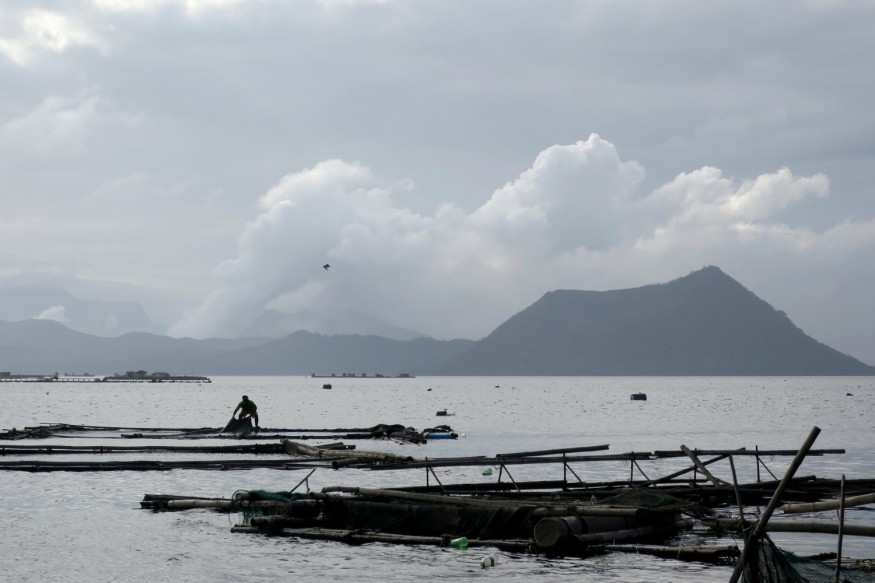
The threat of the Taal Volcano eruption remains on Thursday, January 16, as "intense seismic activity" persists despite the "weak emission" of ash plumes.
The Philippine Institute of Volcanology and Seismology (PHILVOCS) noted the "short-lived dark gray ash plumes" at 6:17 am, and 6:21 am (Philippine local time) on Thursday, 500 meters and 800 meters high, respectively.
PHIVOLCS, in its 8 am bulletin (Philippine local time), said the activity has generally waned to weak emission of steam-laden plumes 700 meters high that dispersed ash to the southwest direction.
Residents near the Taal Volcano must remain on guard "against the effects of heavy and prolonged ashfall," said Phivolcs. The airspace around the volcano remains off-limits, too.
Areas nearest to the Taal Volcano were blanketed in ash. Ashfall earlier reached nearby provinces - including and the Manila, but air quality has since returned to normal in the capital region.
Since the day Taal started erupting on January 12, there had been more than 500 volcanic earthquakes recorded. At least 170 of these were magnitudes 1.2 to 4.1 and felt at Intensities I to V. These are considered strong for volcanic earthquakes.
Just from 5 am on Wednesday, January 15, until 5 am on Thursday - or in 24 hours - there were 103 volcanic earthquakes. Fourteen (14) of these tremors were magnitudes 1.4 to 4 and felt at Intensities I to III.
"Such powerful and constant seismic activity under Taal's structure may lead to further eruptive activity," PHIVOLCS said, explaining that magma is still rising.
Alert Level 4 remains in place, given the circumstances. The hazardous eruption is "imminent" or may happen "within hours to days." PHIVOLCS said they are taking into account the "easing of emission" at the same time.
Maria Antonia Bornas, chief of the Phivolcs Volcano Monitoring and Eruption Prediction Division, in a press briefing on Thursday morning, said they're not ruling out the possibility of a hazardous eruption yet.
However, Bornas said they're also looking at the possibility that there might be a lull for a considerable period of time since the situation is "a bit tricky" at the moment.
Scientists are preparing for the "worst-case scenario" as Taal continues to show a low-altitude surge of ash and hot gas, which could bounce over the water due to their low density.
However, PHIVOLCS said the lake at Taal Volcano's crater dried up. The ground under the lake is either expanding or breaking apart, too.
The local geological agency reiterated that there must be "total evacuation" of Taal Volcano Island as well as high-risk areas within a 14-kilometer radius from the main crater. Fissures along the Pansipit River Valley where fissuring has been observed.
Thousands of people are staying in evacuation centers. However, some people defied the evacuation order and chose to remain in their homes.
At least three evacuees have died, according to Rappler. However, it is unclear if their deaths were related to the ashfall or were because of preexisting medical conditions.
At least ₱75 million (US$ 1.5 million) estimated worth of damage among livestock and crops since the eruption started - with the coffee as the most affected commodity.
© 2025 NatureWorldNews.com All rights reserved. Do not reproduce without permission.





